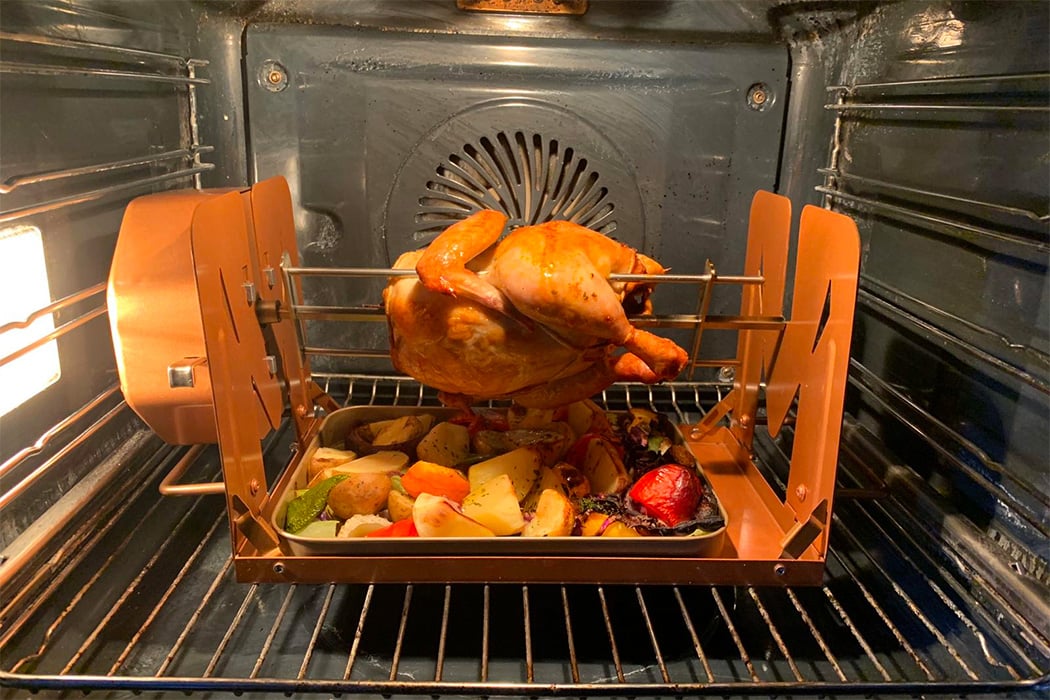When Does Rotisserie Chicken Go Bad: Shocking Facts You Need to Know!
Written By James Morgan
Everyone loves rotisserie chicken. It's juicy, flavorful, and convenient. But, have you ever asked yourself, 'when does rotisserie chicken go bad?' Certainly, every barbecue enthusiast needs to master the art of knowing when to savor and when to discard this delightful savory treat. In this article, we delve into the intricacies of rotisserie chicken's shelf life, storage methods, and essential tips to prevent foodborne illnesses.

Understanding the Shelf Life of Rotisserie Chicken
Knowing when does rotisserie chicken go bad is crucial for maintaining optimal flavor and safety. Generally, rotisserie chicken can last for about four days in the refrigerator. Some might push this limit to five days, but caution is recommended. Numerous factors influence how long your chicken stays good, such as storage conditions, initial freshness, and the presence of any preservatives.
Day of Purchase
The shelf life of rotisserie chicken starts ticking the moment it leaves the rotisserie. purchasing a freshly cooked chicken, note the time and date. Always aim to buy your rotisserie chicken as close to the moment it's cooked as possible. Avoid the risk of buying one that's been sitting out for hours at the store.
Proper Storage Practices
The key factor that determines when rotisserie chicken goes bad is how you store it. Ensure you store the chicken in an airtight container to avoid contamination and bacterial growth. Immediately refrigerate the chicken at or below 40F after bringing it home. For those looking for convenience, check out this step-by-step guide on making rotisserie chicken at home.

Signs Your Rotisserie Chicken Has Gone Bad
Nothing ruins a meal like biting into spoiled chicken. To prevent this, you need to be aware of the telltale signs that indicate your rotisserie chicken has gone bad.
Unpleasant Odor
The first indicator is the smell. If your rotisserie chicken emits a sour, rancid, or otherwise off-putting odor, toss it immediately.
Change in Texture
Spoiled chicken will often develop a slimy texture. This sliminess is due to bacterial growth and should be a clear red flag.
Color Changes
A change in color is another indicator. Fresh rotisserie chicken should be a golden brown. If you notice any green, gray, or unusually darkened areas, it's time to discard the chicken.

Extending the Life of Your Rotisserie Chicken
For those serious about minimizing waste and maximizing deliciousness, the following tips will help you preserve your rotisserie chicken longer:
Properly Freezing Rotisserie Chicken
Freezing is the best way to preserve rotisserie chicken beyond the recommended four-day refrigerator period. Wrap the chicken tightly in plastic wrap and then foil before placing it in a freezer bag.
Rotate and label your frozen items with the date they were stored. This method can extend the life of your chicken to as much as four months. For more details, check out these useful tips.
Vacuum Sealing
Vacuum sealing can significantly prolong the life of your rotisserie chicken while maintaining its flavor and texture. This method removes oxygen, which bacteria need to grow.

Reheating Rotisserie Chicken
Correct reheating is vital for safety and taste. Improper reheating can lead to uneven heating, allowing bacteria to thrive in cooler pockets.
Oven Reheating
Preheat your oven to 375F. Place the chicken in an oven-safe dish and cover it with foil to retain moisture. Heat for about 20-25 minutes.
Microwave Reheating
While more convenient, microwaving can sometimes result in uneven heating. Cover the chicken with a microwave-safe lid, and heat it for about 2-3 minutes, checking regularly.
Frequently Asked Questions
Can I eat rotisserie chicken after 5 days?
It's not recommended to consume rotisserie chicken after five days due to potential bacterial growth and foodborne illness.
Is it safe to freeze rotisserie chicken?
Yes, rotisserie chicken can be safely frozen for up to four months using airtight or vacuum-sealed packaging.
How can I tell if rotisserie chicken has gone bad?
Signs of spoilage include a sour smell, slimy texture, and discolored patches.
As an Amazon Associate, I earn from qualifying purchases.



